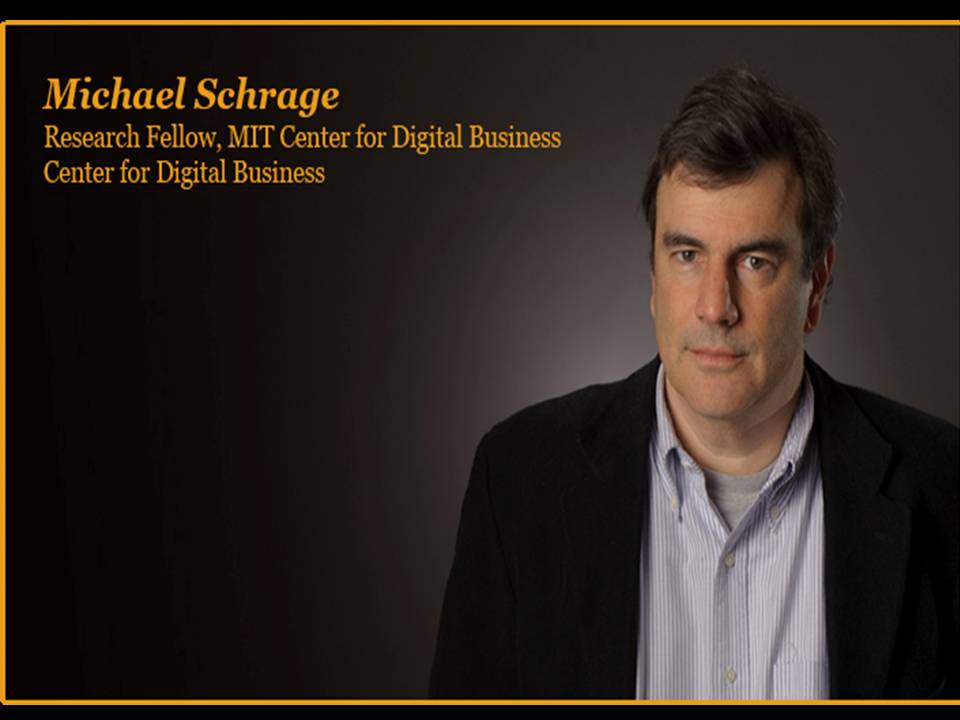What if AI stood for ‘Augmented Introspection’ as well as ‘Artificial Intelligence’? We’ve been given a precious do-over opportunity in this emergent time of AI technology, where we can choose to re-design our cities and our selves to align more closely with what we want those things to be. So — what do we want it to be?
Michael Schrage, MIT research fellow and innovation leader, thinks we need to push past the base-level notion of AI servants and assistants. What individuals need to succeed economically and personally are digital tools that can augment (or suppress) our selves — that’s right, plural. Schrage’s vision of AI is informed by theories of mind developed by cognitive scientists and behavioral economists like Daniel Kahneman, Marvin Minsky, Robert Kurzban and Jonathan Haidt. Michael Schrage’s most recent book is The Innovator’s Hypothesis: How Cheap Experiments Are Worth More Than Good Ideas.
“I like to say that the real future of AI is not artificial intelligence but augmented introspection. All of these different theories of mind and theories of self create opportunities for redefining what we want augmented introspection to be. Look at Eric Berne’s transactional analysis: parent, child, adult. Different ways of thinking about the self. Freud: ego, id, super ego.
Let’s use the enormous research that has gone on in psychology about the nature of the self—the nature of the self as in the individual and the nature of the self as the self relates to other people—and let’s use technology to create versions of the self that allow for more efficacious, more effective, more creative, more innovative, more productive interactions.
I think it’s important to draw a distinction between a cognitive tool and an enhancement and a multiple self or a version of one’s self that amplifies, exaggerates, improves, enhances, augments some attribute that really matters to you. So here’s a simple way of thinking about this. We have Google Maps. It tells you a way to go. You’re in a hurry. You’re in such a hurry that you’re prepared to dare I say cut corners and go through a stop sign or two. That’s your bold impatient self. Well, should Google Maps make a recommendation that supports your bold impatient self?
Or you’re doing research on Amazon, you’re looking for books to read on a certain subject. You don’t want the mainstream books that you, the typical average normal you ordered, what about the you that looks to challenge your fundamental assumptions, to stretch your thinking? What if you had a recommendation engine that recommended stuff for you to read that pushed your thinking? That challenged you? That kicked your assumptions in the groin? That’s a different kind of a tool.
Now, what do these things have in common? The self is about agency. It’s about choice. You, however you want to define it, choose. What I’m saying AI, machine learning and recommenders and smart recommenders bespoke customer recommenders make different is that you can pick different frontiers, different boundaries of yourself. What aspect of yourself do you most want to enhance and advance? What aspect of yourself do you want to mitigate or suppress? I think this cuts both ways. I think we’re going to see versions of the self that allow for greater compassion, less impatience.
What I have found so fascinating in this is there’s so much exciting and compelling and groundbreaking work in psychology, sociology, behavioral economics about what is the self, who is the self. There’s Nobel Prize winning work from Daniel Kahneman—Thinking Fast and Slow—about the immediate self and the more thoughtful slow process self. There’s Marvin Minsky, the late Marvin Minsky, one of the pioneers in artificial intelligence who talked about a society of mind and the modular brain. There’s Robert Kurzban. There’s Jonathan Haidt. There’s social psychologists and anthropologists who are looking at: “Who is the self? What’s the difference between one’s self and one’s identity?”
My insight is let’s use these different dimensions of self as a design opportunity. Let’s look at the society of mind and say what kind of digital tools should support this kind of society? Daniel Kahneman thinking fast and slow, what kind of nudges do we want to support the faster brain versus the slower one? …”

